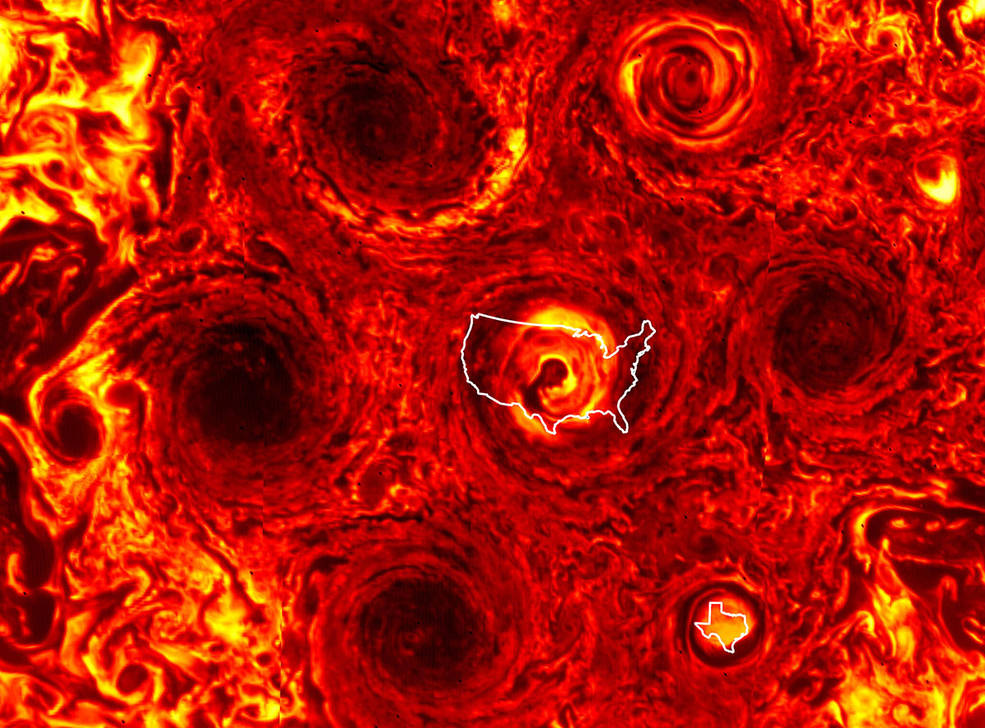Twenty-five years ago, NASA sent history’s first probe into the atmosphere of the solar system’s largest planet. But the information returned by the Galileo probe during its descent into Jupiter caused head-scratching: The atmosphere it was plunging into was much denser and hotter than scientists expected.
New data from NASA’s Juno spacecraft suggests that these “hot spots” are much wider and deeper than anticipated. The findings on Jupiter’s hot spots, along with an update on Jupiter’s polar cyclones, were revealed on Dec. 11, during a virtual media briefing at the American Geophysical Union’s fall conference.
Two of Jupiter’s major northern hurricanes can be seen in a new moving image from the JunoCam camera, created from five images taken from altitudes of about 18,000 miles (28,567 kilometers) above Jupiter’s cloud cover.
Outer clouds in tornadoes rotate counterclockwise, but the inner clouds rotate clockwise, which is “somewhat strange,” said Candice Hansen, a JunoCam developer and a senior scientist at the Institute of Planetary Sciences in Tucson, Arizona.


